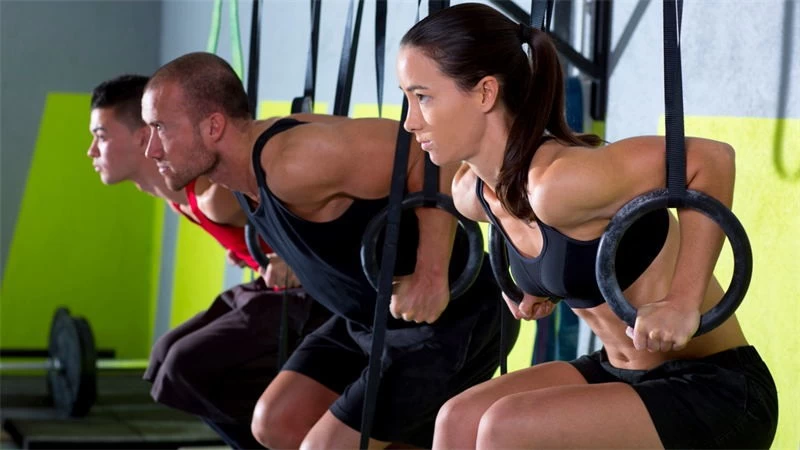Dips are an amazing exercise to build serious muscle mass, strength, and aesthetics for the chest, triceps, and anterior shoulders. Like the chin-up, pull-up, row, and press; dips are a staple of strength, power, and fitness athletes across the globe.
In recent years ring training has become increasing popular among the general population and recreational athletes (despite being around for decades). The secret to enhanced muscular development and transferable strength is out, and we are here to talk about it.
Therefore, in this article we will discuss the ring dip and what you as an athlete and/or coach should master it.
Muscles Worked
The ring dip offers all level lifters a way to increase strength, symmetry, and muscular development of the following areas:
• Triceps
• Chest
• Shoulders
• Abdominals
Benefits of the Ring Dip
Below are a few reasons why the ring dip should be included into your movement arsenal as a coach and/or athlete.
1. Serious Upper Body Mass
Few movements can produce as much upper body mass and strength as the dip. Dips are a movement that all level athletes can master (with the exception of athletes with certain shoulder injuries), and have been called by some as the “upper body squat”. Performing dips in general is a great way to increase muscular hypertrophy and strength of the triceps and chest. Ring dips take things one step further. By performing on the rings, balance and muscular coordination are challenged, often leading to slower, more focused contractions and increase time under tension; all of which can enhance muscle firing rates and microscopic muscle damage (the good type of muscle damage).
Additionally, by challenging various positions and ranges of motion, the muscles are asked to promote force throughout a new range, stimulating new muscle fibers to develop. Over time, greater size and synchronization of muscle firing rates can result in greater force outputs and stabilization across pressing and elbow extension movements.
2. Better Muscular Coordination and Balance
Ring training challenges the body to produce force throughout a wide range of motion, while simultaneously performing movements under highly controlled and skillful movement patterns. The balance and coordination needed to perform ring dips can be done to promote muscular symmetry (as asymmetries will result in uncoordinated movements), enhanced coordination of movements and force production, and greater balance throughout the structural components of the shoulder, elbows, and wrist joints.
In doing so, the lifter can work to increase injury resilience at those vulnerable junctions, as well as have increased performance when transitioning back to more stable movements such as dip bars, floor push ups, and barbell/dumbbell presses.
3. Increased Gymnastics Skill and Strength
In sports like CF and gymnastics, the rings are a foundational movement that must be mastered through systematic progressions that reinforce stability, strength, and controlled movement throughout the fullest ranges of motion.
Ring dips can be used to increase strength, structural stability, and skill for enhanced performance in muscle ups and/or transitioning from the low to high rings supported position.




